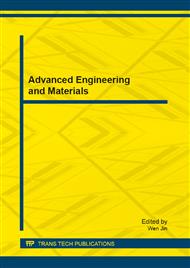p.3
p.8
p.14
p.20
p.26
p.31
p.35
p.42
PZT Thin Films Deposited by RF Magnetron Sputtering
Abstract:
PZT thin film was fabricated by using RF-sputtering process, and platinum was used as bottom electrodes. The sputtering gases were Ar:O2=25:0 sccm, Ar:O2=20:5 sccm, or Ar:O2=15:10 sccm. After sputtering, the PZT film was annealed for 5 minutes under O2 gas environment and at the temperature of 600 0C, 650 0C, 700 0C or 750 0C. To judge the quality of the deposited PZT film, its physical properties and electric properties were evaluated. The results indicate that the best crystallization temperature of PZT thin film is about 700 0C. Also, the roughness of the PZT thin film becomes larger with the increasing of annealing temperature. By adding more oxygen in the sputtering gas, one could have better crystallization of the PZT film. As for the electrical properties, the leakage current of PZT thin film increases with the increasing of annealing temperature. Furthermore, the ferroelectric property is affected by the crystallization amount of perovskite, the thickness of PZT thin film, and the diffusion situation between the bottom electrode and the PZT film.
Info:
Periodical:
Pages:
8-13
Citation:
Online since:
February 2013
Authors:
Price:
Сopyright:
© 2013 Trans Tech Publications Ltd. All Rights Reserved
Share:
Citation:


